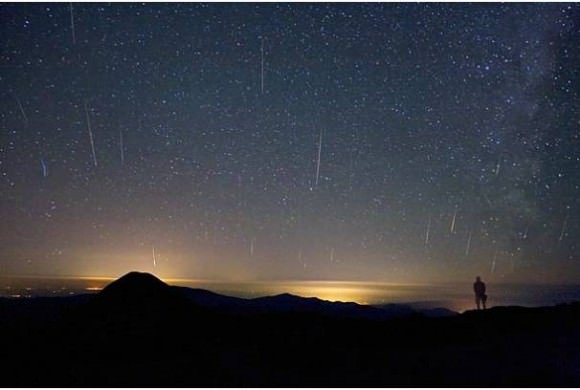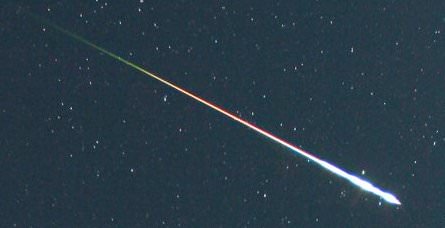[/caption]
The Draconids are coming! Will this meteor shower produce a storm of observable meteors, or just a minor squall? The Draconid Meteor Show should begin on October 8, 2011 starting at dusk (roughly 19:00 BST) and continue through the evening. Peak activity of this normally minor and quiet shower is estimated to be at 21:00 BST (20:00 UT). There seems to be a wide range of predictions for this year’s shower, but some astronomers believe there could be up to 1,000 meteors per hour, making this a meteor storm!
The Draconids or Giacobinids as they are also known, radiate from a point in the constellation of Draco the Dragon in the Northern hemisphere. In the past, notably in 1933 and 1946, the Draconids turned into a meteor storm with meteor rates of more than one every second!
So, will this year bring us a storm? Astronomers believe so as the predicted path of the Earth through the debris streams of comet 21P/Giacobini-Ziner is favorable for a major storm, similar to what has been seen in previous years. Some reports say NASA is even considering the potential risk of damage to the International Space Station and other satellites due to meteroid impacts.
Some astronomers, on the other hand, are saying this shower could be a dud, with only 5 or so meteors per hour.

Observers in the UK and Northern Europe are ideally placed to see the peak of the Draconids. Unfortunately the peak occurs in the day time for North America. There will also be a bright Moon which may drown out many but the brightest meteors, but if predictions are correct, you will still see many. You may see Draconid meteors on the 7th an the 9th also, so it is worth going out and checking the skies.

Draco is a circumpolar constellation visible all night from northern latitudes.
There is no skill or even astronomical knowledge needed to enjoy meteor showers. All you need is to be comfortable, away from bright lights and your eyes. Sit back on a recliner or garden chair and fill your gaze with sky as meteors can appear anywhere as they radiate from the constellation of Draco. For more info on how to enjoy meteor showers visit meteorwatch.org
So what will you see? Draconid meteors are usually slow and bright streaks of light, but if you look away, you can still miss them so keep your gaze on the sky.
There are no guarantees of a meteor storm or even a good meteor shower as these phenomena can be very unpredictable, but the only way to find out is to go outside and look up.
If predictions are correct, you could be in for a spectacular treat and something truly memorable, so don’t miss it. Even if it is cloudy, you can listen to the meteor shower or you can watch as they enter Earths atmosphere
For more information on the Draconids, see the International Meteor Organization’s post on this year’s shower.
Good Luck!


